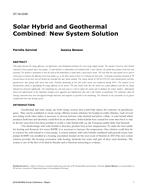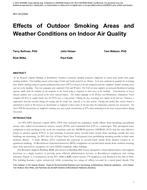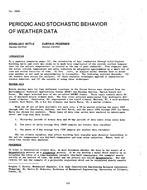ASHRAE Standard 63-1989 effectively raised the minimum outdoor air requirements for ventilating school classrooms by a factor of three. The resulting increase in sensible and latent cooling loads will significantly affect the design and selection of air conditioning equipment for these facilities. Also, in Florida’s hot and humid climate, conventional air conditioning systems may not be able to satisfy the disproportionate increase in latent loads, resulting in increased indoor humidity levels, occupant discomfort, and the potential for mould and mildew growth. The impacts of the Standard on a typical Florida elementary school were studied by performing annual building energy simulations using computer software. A single prototypical school was modelled for three cities – Miami, Orlando, and Jacksonville. The performance of a conventional heating, ventilating, and air conditioning (HVAC) system and several alternative technologies was investigated to assess their ability to mitigate the impacts of the Standard while maintaining acceptable indoor humidity levels. In addition, the installed first costs and life-cycle costs for all HVAC systems investigated were estimated and compared to identify cost-effective options. Presents the results of the simulation study.
KEYWORDS: year 1997, Ventilation, schools, subtropics, USA, rooms, heating, air conditioning, humidity, indoor, calculating, performance, service life, costs, comparing, relative humidity, energy consumption, economics, air change rate, demand controlled ventilation, indoor, air quality
Citation: ASHRAE Trans. 1997, Vol.103, Part 1, Paper number 4036, 241-258, 12 figs., 9 tabs., refs.
Product Details
- Published:
- 1997
- File Size:
- 1 file , 2.3 MB
- Product Code(s):
- D-16381


